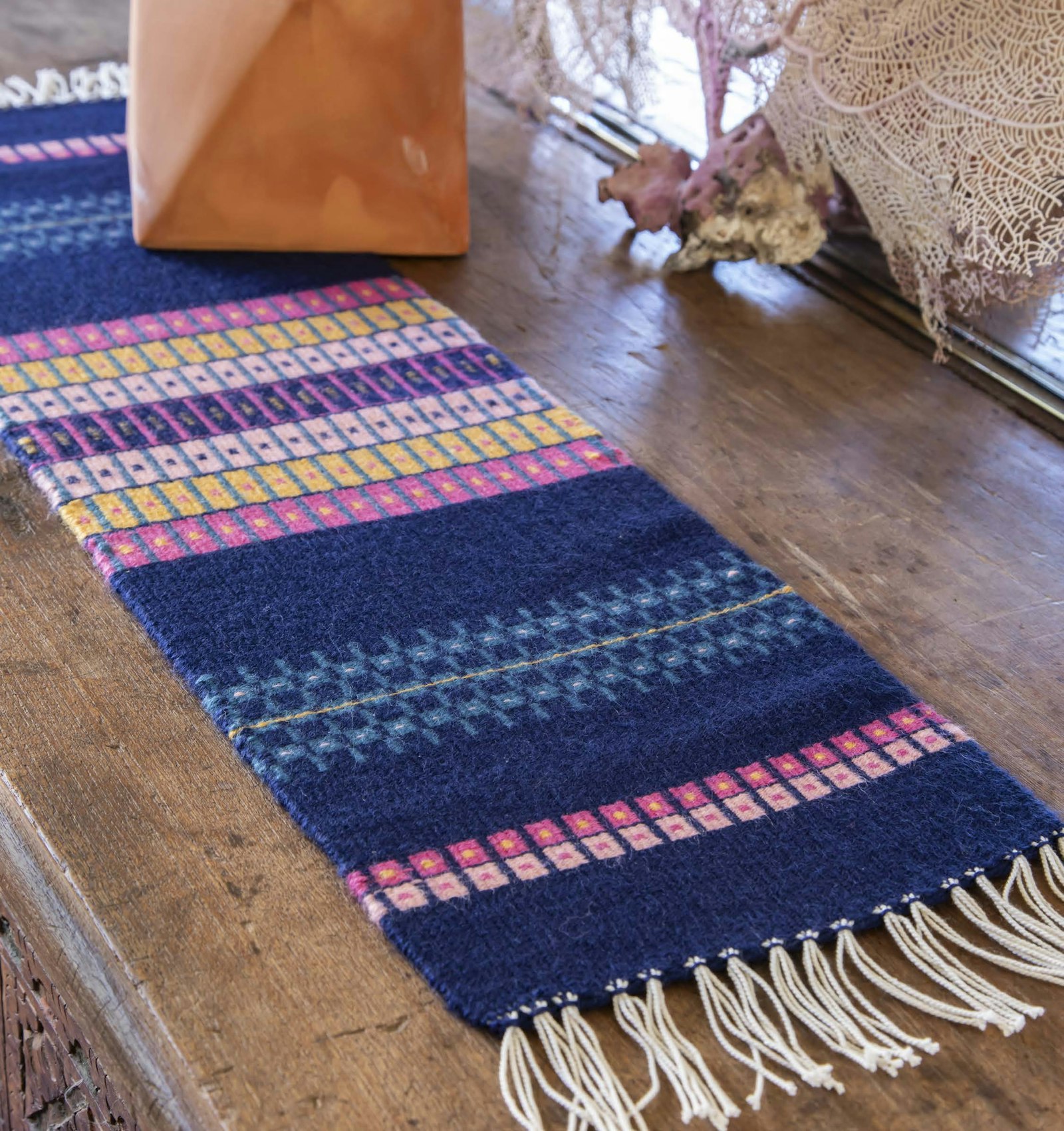Krokbragd is a fantastic structure that can be used to create nearly limitless patterning. What’s even more amazing, is that it comes from just three shafts or sheds, depending on the type of loom you’re using. In the case of the rigid-heddle loom, weaving krokbragd means using either a heddle rod with string heddles or a second heddle to create that third shed. That’s it—once you’ve got that extra heddle rod or heddle set up, you’re ready to weave some truly incredible weft-faced designs.
Curious about how to warp and weave krokbragd on your rigid-heddle loom? You can get all the details in the Summer 2024 issue in Kelly Casanova’s incredible article “Weaving Krokbragd on a Rigid-Heddle Loom” which gives all the details on both methods. Or, if you’re an All Access Subscriber, you can keep reading this exclusive excerpt from Kelly’s article and download two krorkbragd project PDFs to start you weaving right away.
Here’s what Kelly had to say:
Early in my weaving journey, I started weaving krokbragd on my rigid heddle. I credit the weave structure with opening my eyes to the capabilities of this relatively simple loom.
Krokbragd is a weft-faced twill weave structure typically woven on three shafts. The warp is completely covered by the weft, producing a sturdy, attractive fabric that is beautiful and highly functional. Krokbragd, which means “crooked path” or “crooked line,” has Scandinavian origins. Traditionally, krokbragd pieces were used for warmth, such as bed, floor, window, and door coverings, as well as for home décor in the form of wall hangings and furniture covers. Today you’ll often find it used for rugs, runners, and pillowcases.
Krokbragd initially appealed to me for a variety of reasons: Beautiful and striking patterns, ease of loom setup, minimal tool requirements, a large array of design possibilities with just three shafts, design capabilities both on and off the loom, no need to read weaving drafts, and beginner friendliness.

